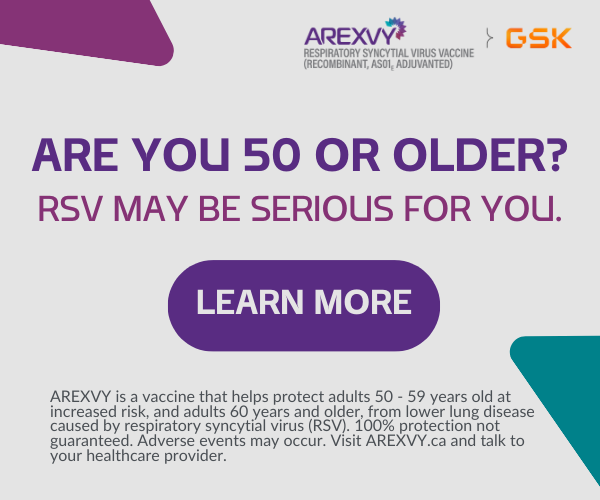The Facts
Angina (also called angina pectoris) is chest pain that appears when the muscle cells of the heart don't get enough blood to properly carry out their pumping function. The lack of blood supply is most likely to cause pain during physical activity, when the heart pumps fastest and needs the most oxygen. Stopping the activity normally relieves the pain. This may help to distinguish angina from other types of chest pain.
Causes
Most of the time, angina is caused by coronary artery disease (CAD). The coronary arteries are the heart muscle's blood and oxygen supply. In CAD, the coronary arteries become narrowed by fatty, fibrous deposits. This means that less blood can pass through them. During exercise or exertion, the cells in the heart (the myocardium) may need more oxygen (and therefore more blood) than the coronary arteries can handle. As these cells are forced to work without enough oxygen, the nervous system complains by sending pain signals to the brain.
When tissue doesn't get the oxygen it needs, this is called ischemia. Angina is usually caused by myocardial ischemia (not enough oxygen in the heart muscle). This isn't the same as myocardial infarction (heart attack). Infarction means permanent cell death caused by long-lasting and severe ischemia. In angina, the cells aren't usually so starved of oxygen that they die. This is why rest or medication is usually effective in relieving the pain.
Heart attacks are normally brought on by events that completely block blood flow in a coronary artery. These events may include travelling blood clots or peeling off of fatty plaques inside the arteries. In angina, there's no sudden blockage, but the artery has become so narrow that it cannot carry the blood needed to handle the demands of strenuous exercise. This usually means it has narrowed to less than half of its original width. It follows that people who suffer from angina are at higher risk of heart attack. For unknown reasons, angina seems to have a better prognosis in women than in men.
Risk factors for angina are basically the same as risk factors for coronary artery disease. They include:
- being male
- being postmenopausal
- diabetes
- excessive alcohol use
- family history of early CAD, stroke, or other circulation-related medical conditions
- high blood pressure
- high salt intake
- unhealthy diet
- low fitness
- obesity
- poor cholesterol profile
- smoking
Not all cases of angina are due to CAD. A minority of cases are caused by spasms in coronary arteries that constrict them enough to seriously reduce blood flow. This can be caused by drugs, especially cocaine. In most such cases, however, the cause is unknown. This condition, known as variant angina (also known as Prinzmetal angina or vasospastic angina), isn't usually a sign of high heart attack risk on its own, but it generally occurs in people who also have coronary artery disease.
Symptoms and Complications
The pain of angina comes from the heart, but it's not generally felt exactly over the heart. The most common focus of pain is under the sternum (breastbone), midway between the breasts or pectoral muscles. Often the pain is not localized to just the sternum and it spreads, commonly down the left arm but also to the back, sides, upper abdomen, right arm, neck, jaw, or even the teeth. Sometimes the pain can occur in these places without occurring in the chest. Any pain in these areas that occurs during exercise and improves with rest should be evaluated by a doctor.
Not everyone with ischemia will experience angina. If there is no angina, it is referred to as "silent ischemia." More commonly, however, people will experience chest pain.
The pain isn't a sudden, shooting, or stabbing type. It's often described as either a dull ache, pressure, heaviness, or a crushing sensation. Pain that comes and goes over a few seconds is also unlikely to be angina, which is steady and often predictable.
Women may experience different symptoms. Women often experience pain in the neck, jaw, throat, abdomen, or back. Women may also experience symptoms of shortness of breath, nausea, and vomiting.
Angina is often predictable in the sense that a pattern may emerge after a few attacks. Some people will come to learn that a certain level of exertion is likely to trigger pain. In most cases, the pain will start when expected and slowly ease when exertion is stopped. It is often worse when exertion follows a meal, in cold weather, or in times of emotional stress. Not all angina is predictable.
Unstable angina is the name given to chest pain that:
- unexpectedly becomes worse than usual at a given level of exertion
- starts with lower levels of exertion
- starts while resting
- continues after stopping exercise or taking nitroglycerin medication
Unstable angina can be a warning of an imminent heart attack. In fact, until being assessed by a doctor at a hospital, there's no way to be sure it isn't a heart attack. If you usually experience steady or predictable symptoms and notice an unexpected change in this pattern, you should seek immediate medical attention.
Making the Diagnosis
To diagnose angina, a doctor will evaluate the symptoms and the triggers (e.g., exercise, meals). Certain tests may also be performed. Because angina in most people occurs during exertion, the most common test for angina involves running on a treadmill or performing some other exercise while hooked up to a electrocardiogram (ECG) monitor. This simple device can show changes in the heart's electrical activity, which signals ischemia. This is called an exercise stress test. Some people with angina show normal results on these tests; such people are far less likely to suffer a fatal heart attack than those whose ischemia can be detected.
In some cases, a picture of the heart is taken at rest and with exercise. This can be done with an ultrasound (echocardiogram) or with nuclear imaging in which people are injected with a mildly radioactive dye. (This is safe, except for pregnant women or the rare person who is allergic to the special dye.) The nuclear imaging procedure allows the blood supply through the heart muscle to be seen by a rotating camera in a test called a nuclear stress test.
The insides of the coronary arteries can also be seen directly in a procedure called coronary angiography.
Treatment and Prevention
There are 3 complementary approaches to treating angina. One is to reduce angina pain with medications. Another is to treat the narrowed arteries with operations such as coronary artery bypass graft surgery or angioplasty (stenting). The third is to eliminate the risk factors that are causing coronary artery disease, of which angina is a symptom.
Several types of medications are available for managing angina: beta-blockers, nitrates, calcium channel blockers, antianginal, and antiplatelet medications.
- Beta-blockers and some calcium channel blockers reduce the demands put on the heart by decreasing the heart rate and lowering the blood pressure.
- Nitrates, such as nitroglycerin,* help to open the coronary arteries, which then supply more blood to the heart. A tablet or spray of fast-acting nitroglycerin can be placed under the tongue (this is called sublingual) to provide rapid relief of angina pain. Longer-acting nitrates can be taken in tablet form 1 to 3 times a day to help control and prevent angina attacks. Nitroglycerin is also available in patches and ointment that can be applied to the skin for continuous control. With longer-acting nitrates, most physicians advise an 8 to 12-hour period where no nitrates are used or taken, as continuous use causes the nitrates to be less effective at the same dose.
- Antiplatelet medications such as ASA* (acetylsalicylic acid), or clopidogrel are given as "blood thinners" to prevent blood clots from forming and blocking the coronary arteries.
- Antianginal medications like ranolazine do not affect a person's heart rate or blood pressure and can be used to manage angina.
In addition to these medications, cholesterol-lowering medication may also be recommended for people with angina. A family of cholesterol-lowering medications, referred to as "statins," has been shown to best reduce the occurrence of heart attacks in people with angina even if their cholesterol profile is normal. Similarly, a group of blood-pressure-lowering medications, called ACE-inhibitors, have also been shown to reduce the risk of heart attacks in people with angina, even if their blood pressure is normal.
Sometimes, narrowed arteries can be fixed with invasive procedures such as angioplasty (stenting) or bypass surgery. The artery may be opened with angioplasty, a procedure which can directly open the narrowing by inflating a tiny balloon under high pressure. After the balloon is deflated and removed, a metal mesh called a stent is usually left in place to prevent the widened artery from narrowing again. Bypass surgery improves blood flow to the heart by removing blood vessels from elsewhere in the body (usually leg veins or arteries from the inside of the chest) and attaching them to the narrowed coronary arteries.
However, angioplasty and bypass surgery do not get rid of the plaques entirely. If the risk factors which caused the plaques in the first place are not eliminated, the arteries may clog up again.
People with coronary artery disease should quit smoking, lose excess weight, drink alcohol in moderation, maintain a healthy diet with a low salt intake, improve cholesterol levels, and control high blood pressure with lifestyle changes and medications.
Exercise can go a long way in treating angina. Angina can make people want to avoid exercise because it's painful, but it's worth adding exercise to your lifestyle to encourage the growth of new blood vessels that can compensate for existing blockages. Some people whose angina didn't improve with medications and even bypass operations have become pain-free after a sensible exercise program.
People with angina should begin an exercise program only under medical supervision. It's important to start slowly, especially if the person has previously had unstable angina or a heart attack. Along with the benefit of relieving the pain of angina, exercise will also reduce the risk of heart attacks and strokes.
All material copyright MediResource Inc. 1996 – 2025. Terms and conditions of use. The contents herein are for informational purposes only. Always seek the advice of your physician or other qualified health provider with any questions you may have regarding a medical condition. Source: www.medbroadcast.com/condition/getcondition/Angina



